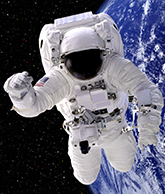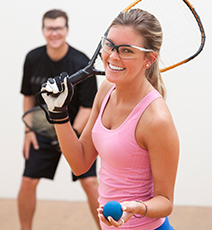|
A recent report of two women who temporarily lost sight in one eye after reading their smartphones while lying in bed shouldn’t cause alarm, experts say. But the incidents do point to the importance of using digital devices smartly to avoid eye strain.
The women lost vision for up to 20 minutes in one eye after reading their phones in the dark while lying in bed with the other eye covered by a pillow, researchers wrote in The New England Journal of Medicine.
Dr. Gordon Plant of Moorfield's Eye Hospital in London told the Associated Press that the eye reading the phone was adapted to the light, while the covered eye was adapted to the dark. When the women put their phone down, they couldn’t see with their reading eye. "It’s taking many minutes to catch up to the other eye that's adapted to the dark," Plant said. People should look at their phones with both eyes, he advised.
The researchers called the condition "transient smartphone blindness." They said that it is likely to become more common, because phone manufacturers are making brighter screens for easier reading.
Dr. Rahul Khurana, a spokesman for the American Academy of Ophthalmology, said that he doesn’t consider this a serious problem. He noted it is not an official medical condition, and needs more study.
CLICK HERE TO READ HOW TO PROTECT YOUR EYES WHEN USING A SMARTPHONE
 The mysterious syndrome impairing astronauts’ sight The mysterious syndrome impairing astronauts’ sight
In 2005, astronaut John Phillips took a break from his work on the International Space Station and looked out the window at Earth. He was about halfway through a mission that had begun in April and would end in October.
When he gazed down at the planet, Earth was blurry. He couldn’t focus on it clearly. That was strange — his vision had always been 20/20. He wondered: Was his eyesight getting worse?
“I’m not sure if I reported that to the ground,” he said. “I think I didn’t. I thought it would be something that would just go away, and fix itself when I got to Earth.”
It didn’t go away.
During Phillips’s post-flight physical, NASA found that his vision had gone from 20/20 to 20/100 in six months.
John Phillips began experiencing sight issues during his time on the International Space Station in 2005, but was reluctant to say anything while in space. (NASA)
Rigorous testing followed. Phillips got MRIs, retinal scans, neurological tests and a spinal tap. The tests showed that not only had his vision changed, but his eyes had changed as well.
The backs of his eyes had gotten flatter, pushing his retinas forward. He had choroidal folds, which are like stretch marks. His optic nerves were inflamed.
Phillips’s case became the first widely recognized one of a mysterious syndrome that affects 80 percent of astronauts on long- duration missions in space. The syndrome could interfere with plans for future crewed space missions, including any trips to Mars.
CLICK HERE TO READ MORE
 Protective eyewear; at home, work and at play Protective eyewear; at home, work and at play
Eye protection means more than just wearing the contact lenses or glasses you may use for vision correction. The type of eye protection needed will depend on the activity you are involved in.
For most repair projects and activities around the home, standard ANSI-approved protective eyewear will be sufficient. For many work situations, the same protection you use at home will suffice, but there are important exceptions you need to know about. Sports eye protection should meet the specific requirements of that sport; these requirements are usually established and certified by the sport's governing body and/or the American Society for Testing and Materials (ASTM).
Protection in the Home
The American Academy of Ophthalmology and the American Society of Ocular Trauma recommend that every household have at least one pair of ANSI-approved protective eyewear to be worn when doing projects or activities that could create a risk for eye injuries at home.
Choose protective eyewear with "ANSI Z87.1" marked on the lens or frame. This means the glasses, goggles or face shield meets the American National Standards Institute. This ANSI-approved protective eyewear can be easily purchased from most hardware stores nationwide.
To determine if your activity merits eye protection, consider if it will involve:
- Use of hazardous chemicals or other substances that could damage your eyes upon contact;
- Flying debris or other small particles. Note that both active participants and bystanders can be at risk from such activities;
- Projectiles or objects that could fly into the eyes unexpectedly.
Protection at Work
The eye protection needed to do your job safely is determined by the Occupational Safety and Health Administration (OSHA). To find out what standards apply, check with your company's human resources department, or whoever is charged with overseeing OSHA compliance.
With the exception of welding, which requires additional eye and face protection, OSHA standards may often require the same ANSI-certified eye protection at work that you should use at home.
Protection at Play
The eye protection needed to prevent eye injuries in your sport is determined by various standards set by ASTM.
Protective glasses or goggles with UV protection should be worn when snow or water skiing. They will help shield the eyes from sunburn and glare.
CLICK HERE TO REVIEW EYE SAFETY STANDARD LISTED PER SPORT |


